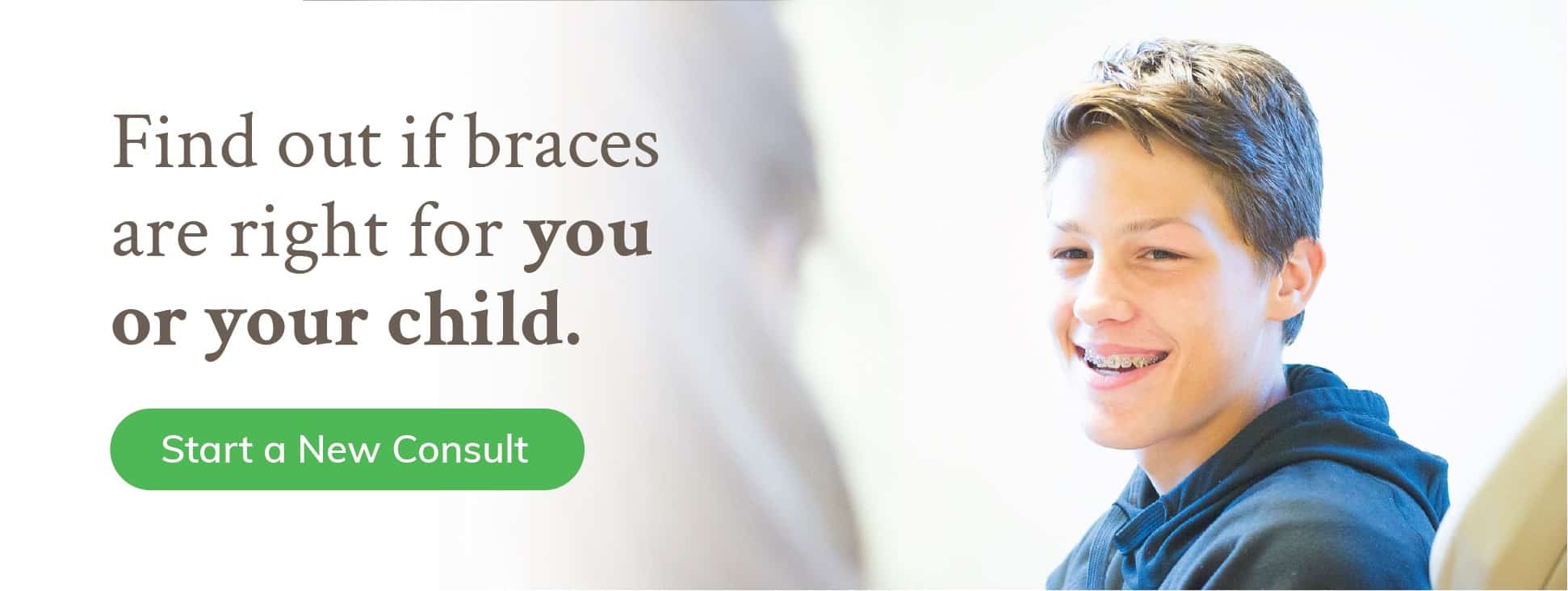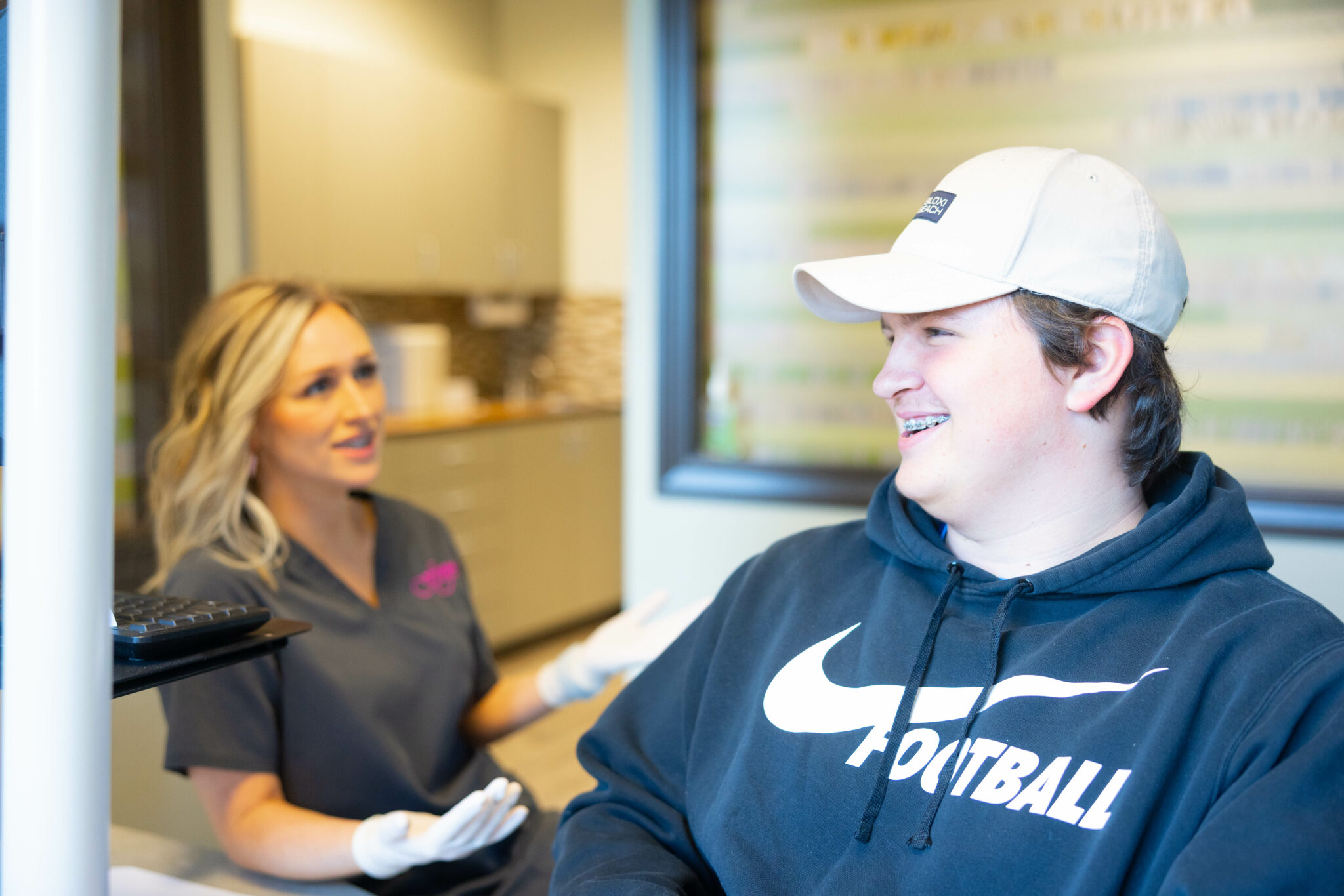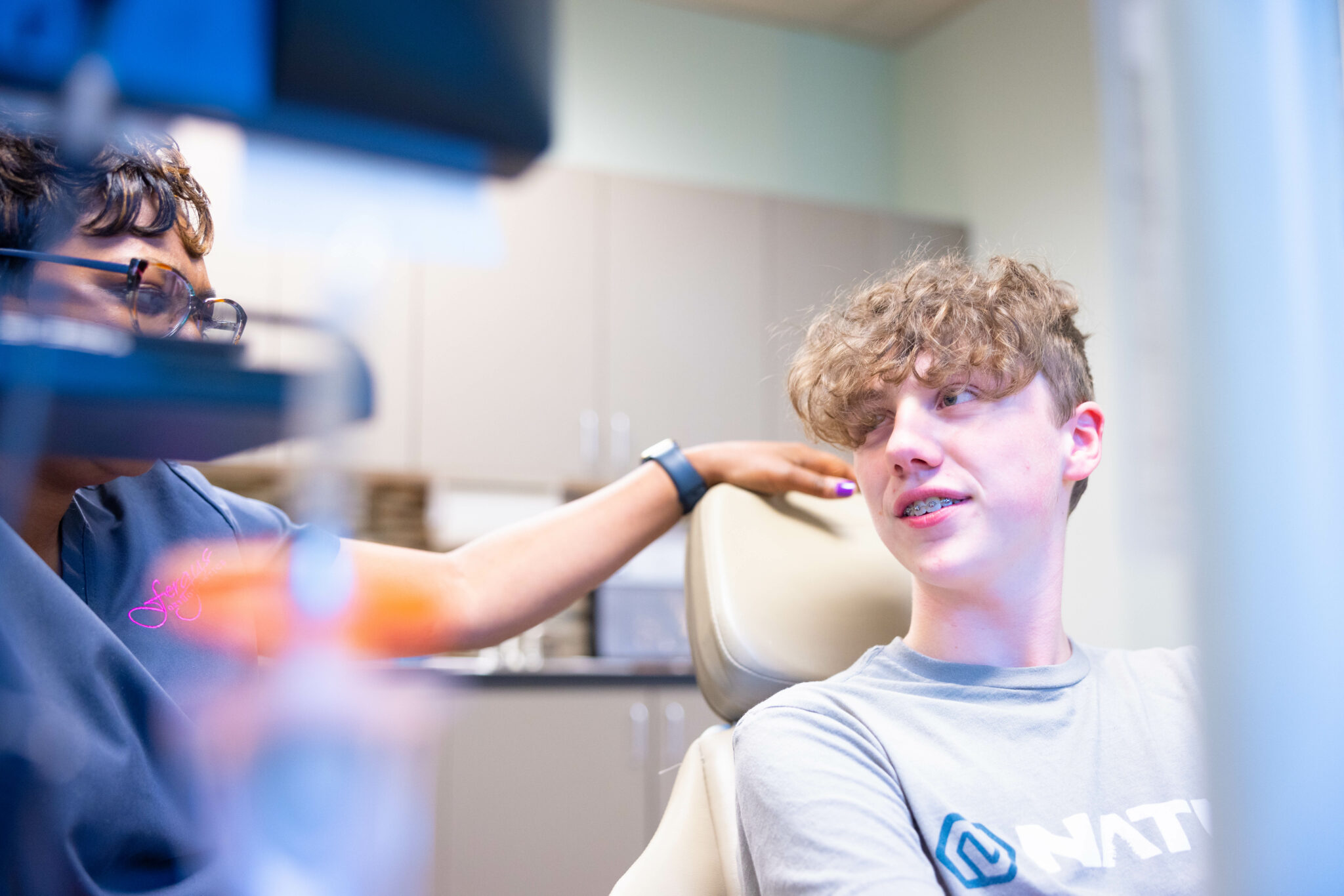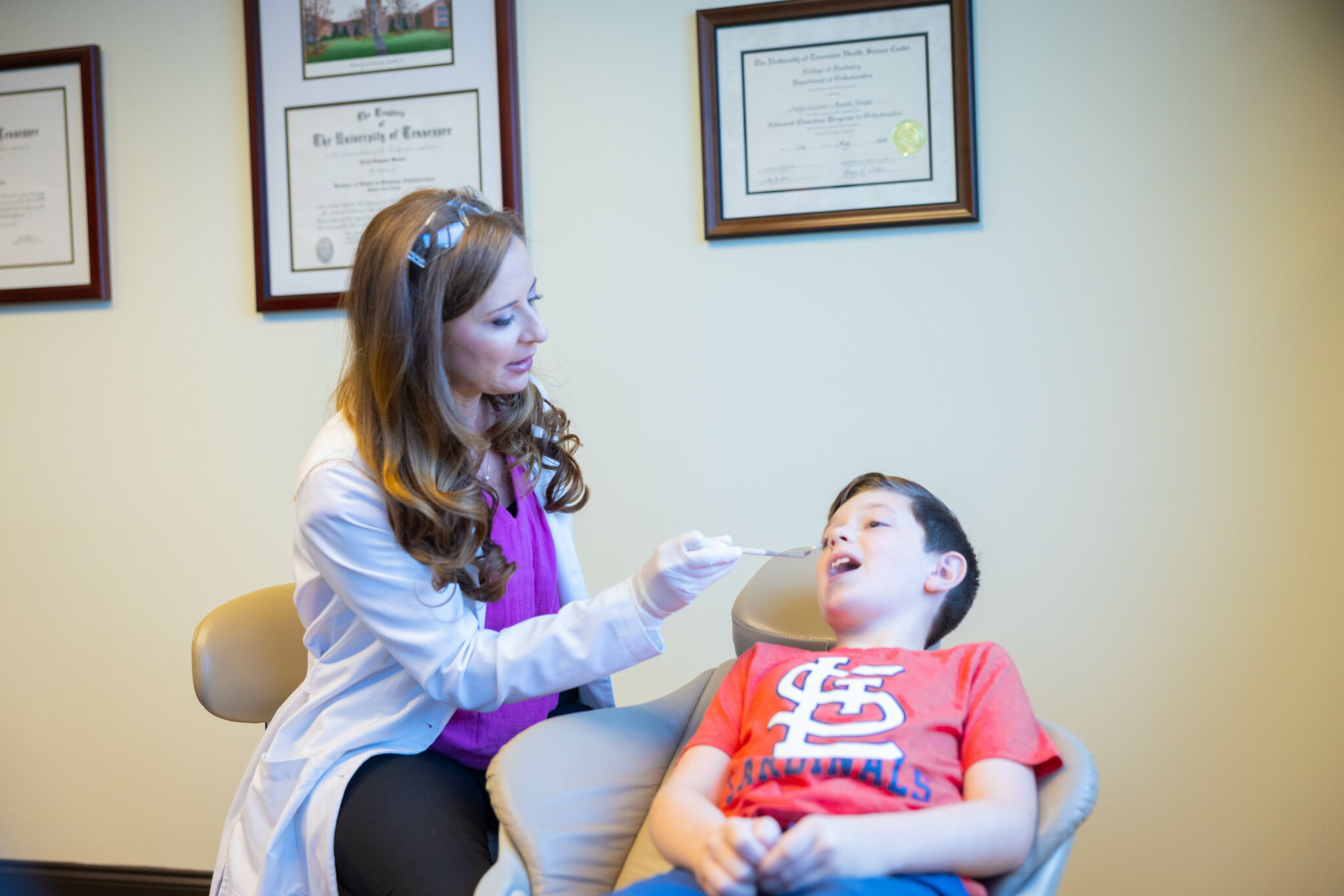Fergus Orthodontics treats all kinds of dental issues. Some of these are caused by genetics, but bad habits can cause others. Those problems must be corrected before the patient can have a successful treatment. One such habit we have to stop is tongue thrusting, which can cause an open bite.
Tongue thrusting can deform the shape of your teeth and jaw, leading to eating problems and speech impediments. Your orthodontist has ways to stop this habit and restore your smile with braces.

What is Tongue Thrust?
The tongue thrust reflex is when the patient pushes their tongue against their front upper teeth. This could happen while talking, eating, or as an unconscious habit. It’s most common in children, but tongue thrust in adults can happen.
Adults with tongue-thrusting habits usually didn’t get a chance to break the habit or treat the cause as a child. Those adults often have an open bite, where the front teeth are angled outward so that the upper and lower teeth don’t meet when the mouth closes. Orthodontic treatment can return the teeth to their correct positions.
Children can also end up with an open bite or overbite due to tongue thrust. Tongue thrusting reflex can be caused by bad or incorrect swallowing habits, allergies, or a tongue tie.
What Is a Tongue Tie?
A tongue tie is a slight abnormality in the tongue where a thick piece of tissue connects the tip of the tongue to the bottom of the mouth.
Tongue ties are rare but can cause various problems in your child’s mouth, including tongue thrusting. They can also cause speech impediments and problems eating.
Tongue ties, also called ankyloglossia, are present from birth and can usually be corrected immediately by removing the excess tissue. You can also choose to wait to see how it affects your child.
Once the tongue tie is removed, your child will likely need to learn how to move their tongue properly and where to place it at rest. That’s where a tongue crib appliance can come in.
Signs of Tongue Thrust
There are several signs of tongue thrust in adults and children. Speech impediments are among the most common signs. They may have trouble pronouncing sounds such as s, z, t, d, l, or n. The tongue may thrust forward during these sounds instead of sitting behind the front teeth.
Other common signs of tongue thrust include:
- The tongue protrudes between the teeth when speaking.
- Visibility of the tongue between the teeth while the tongue is at rest or while swallowing.
- Mouth breathing.
- Difficulty eating.
- Inability to move the lips properly.
- Open bite malocclusion.
- Open mouth even at rest.
How do you fix tongue thrusting? There are tongue thrust exercises you can do. If your teeth also need fixing, then a tongue thrust appliance may be a better option.
What Is a Tongue Crib?
Many parents want to know how to stop tongue thrusting because they can tell it’s affecting their child’s teeth and jaws. Fergus Orthodontics has ways to help.
Tongue thrust must be treated and stopped before braces treatment corrects the open bite. One way we do this is with a tongue crib. This appliance is placed in the mouth to train the tongue to stay in its proper place, away from the back of the teeth.
There are different types of tongue cribs. One of the most common has a wire “basket” that is either flat or bulges outward to hold the tip of the tongue in place. This device ensures the tongue stays where it’s supposed to be and trains the tongue to stay there.
Another version of the tongue crib includes a “rake,” three wires or loops that hang down while blocking the tongue from sitting behind the teeth. These tongue crib spikes are used to stop the patient’s thumbsucking habit. Sucking your thumb can cause tongue-thrusting and can damage your teeth.
The roller tongue crib is less common. It’s made to keep the tongue busy by placing a small roller behind the teeth. It turns that unconscious tongue-thrusting habit into a conscious one, making it easier to break.
Fergus Orthodontics can determine which tongue crib is best for you or your child during your first visit and initial evaluation.

Tongue Thrust Exercises
Patients with tongue thrusting problems can also use special exercises to help alleviate their habit and retrain their tongue muscles. These exercises can work for patients with a tongue crib before and after the crib is used.
Some exercises correct issues such as reverse swallowing, which causes tongue thrust in small children. Swallowing patterns left untreated can cause eating problems later. Other exercises will teach you to place your tongue in the correct place when it’s at rest.
Tongue Thrust Speech Therapy
Even if the tongue crib stops the tongue-thrusting habit, your child may still have speech problems. Tongue thrust speech therapy with a speech-language pathologist may be needed for your child.
Your child may have difficulty talking with the tongue crib in their mouth. The tongue crib is usually worn about 6-9 months before braces treatment. If your child still has trouble speaking after a few weeks, we recommend having speech therapy.
That therapy may also be needed after braces, though usually, braces treatment clears up the issues causing the speech impediment. Most patients don’t need speech therapy after correcting their tongue thrust habit and braces or Invisalign treatment to fix their open bite.
Tongue-Thrust Treatment in Jonesboro, AR
Tongue thrust is a serious habit that can lead to a variety of problems. Braces treatment can help correct the damage caused to the teeth and jaws, but the habit must be broken first.
Fergus Orthodontics offers braces treatment in Jonesboro, AR, that can correct tongue thrusting and the damage it has caused. Schedule an appointment with us to find out what we can do to help!










